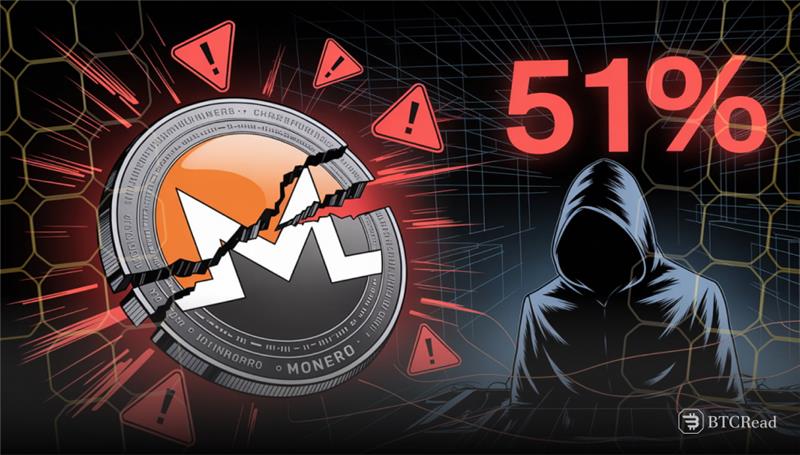The Monero crypto network is facing a rare and serious security challenge. Qubic, a decentralized crypto computing platform, has launched a 51% attack that appears to have succeeded. On Tuesday morning, crypto blockchain observers confirmed a major reorganization of Monero’s chain.
The hack appears to currently control the majority of the network’s hashing power, thus having the capacity for altering the transaction history, blocking payments, or doubling spending. This control is estimated at a $75 million-per-day cost, which is among the most costly attacks in proof-of-work network history.
On Friday, Qubic revealed that it had already reorganized six blocks and caused sixty orphaned blocks. Reports show that in only two hours, Qubic mined nearly 80% of Monero’s blocks, collecting around 750 XMR and more than 7 million XTM.
Crypto rewards outshine Monero mining returns
The round also saw the destruction of 17.2 billion QUBIC for 3,200 QUBIC per billion, worth about $55,000. At the same time, miners and computers earned rewards of 62.2 billion QUBIC, equal to roughly $200,000.
Qubic’s earnings from the process have been estimated at roughly four times greater than Monero miners, and the group still refers to the attack as a continuing experiment. Qubic had previously indicated its intention.
The group stated it would channel enormous computing resources towards Monero in order to gauge its capacity. Early phases divided the power equally between Monero mining and training AI internally, where the earnings were thrice more than the regular mining.
Later, the group attempted to seize control of Monero’s protocol through the modification of reward rules in the favor of Qubic-based miners. Despite facing distributed denial-of-service attacks, Qubic proceeded nonetheless. According to security experts, the design of Monero could have predisposed it to such vulnerabilities.
The future of Monero hinges on the response to the threat
The RandomX algorithm favors CPU mining, which allowed Qubic’s large network of powerful CPUs to dominate the system. Monero’s total hashing base remains small, about 3–4 GH/s, making it possible for a well-equipped group to seize control.
Commentators point out that such attacks are unlikely to be successful against larger proof-of-work chains whose power requirements are higher. But the episode delineates the danger for smaller CPU-based networks that do not have widespread mining distribution.
The situation places Monero at a crossroads. The privacy-based project then must respond to one of the largest threats it has ever seen. Its response towards the pressure from Qubic will be the determining factor in whether the network can withstand this kind of direct, prolonged attack.







